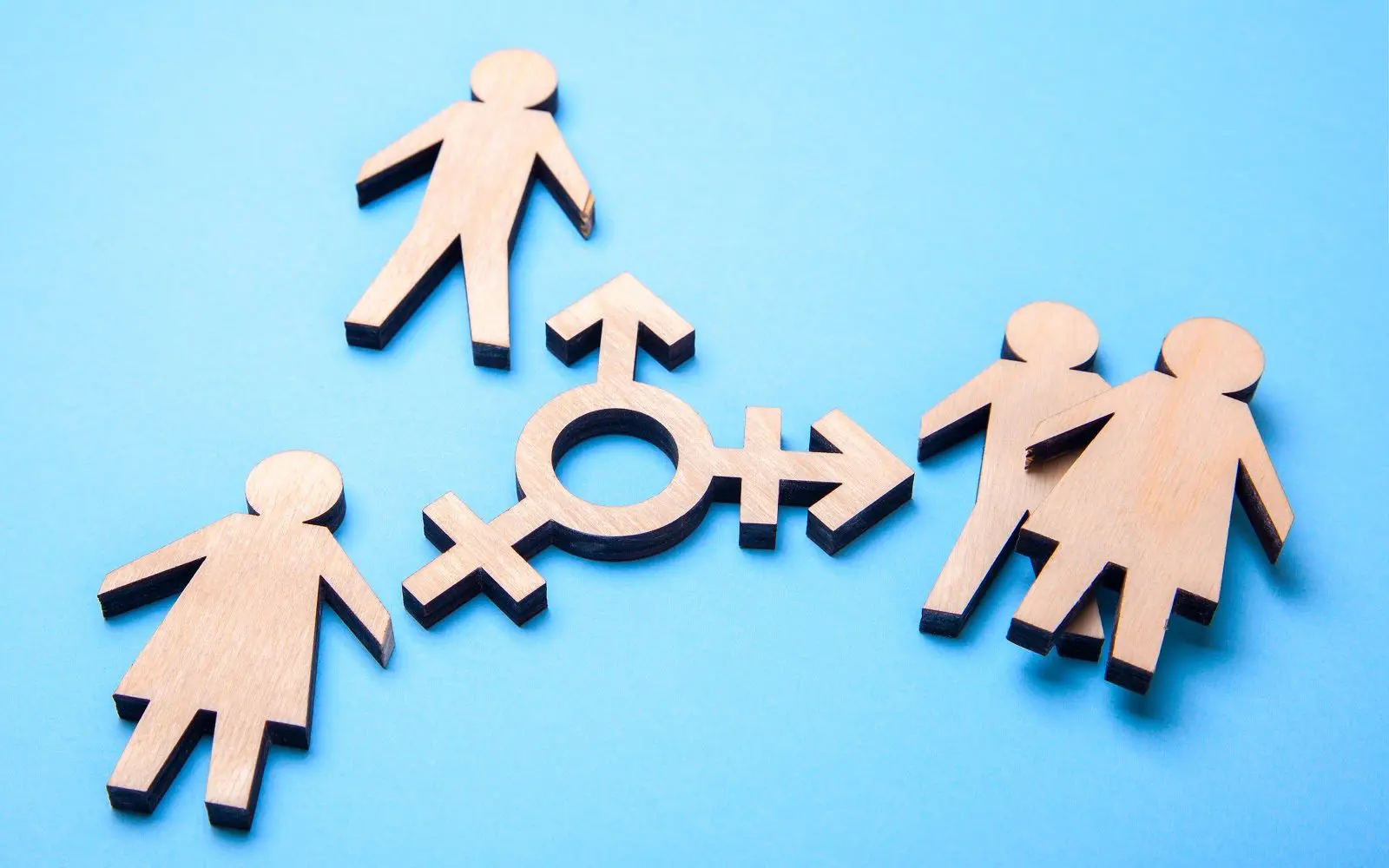What’s the number of transgenders in the United States? What percentage of people are transgender?
A 2022 study by the Williams Institute at UCLA’s School of Law reports that about 1.6 million people in the US over the age of 13 identify as transgender.
According to the World Population Review, each of the 50 states has acquired data on its transgender population. Washington, DC, has the highest percentage at 2.77. Montana, North Dakota, Iowa, Wyoming, and South Dakota have the lowest, at 0.3% each.
Outside of the U.S., researchers have found it much more difficult to determine the number of transgender people. Lack of clear data, the way statistics are kept, and the vague wording of surveys all prevent an accurate count.
According to the World Population Review: “There is very little data as to how many transgender people there are in [nations that recognize transgenderism]. Some nations, such as India, recognize transgender as a third gender. However, there are other nations that are not so open to this idea.”
Data from 2021 shows similar numbers in European countries. Germany and Sweden both claim that transgender people are 3% of their populations. Countries such as Spain and Great Britain claim 2%. Italy, France, Belgium, and Poland all report about 1%.
What Does “Transgender” Mean?
Transgender is an umbrella term. It encompasses anyone who identifies as a gender differing from their biological sex or as no gender at all. It also refers to anyone who had a sex-change operation. A person who is transgender might be a male who identifies as female. She might be a female who identifies as male. A transgender person can identify as neither male nor female. Or he/she could be a person who identifies as a mix of both.
A 2021 study by the William’s Institute at UCLA’s School of Law found that approximately 1.2 million adults in the US identify as nonbinary – meaning they do not identify as a man or a woman – with the majority of them being white, urban, and under the age of 29. The study goes on to say that “nearly one-third of transgender adults identify as nonbinary.”
A “transgender male” is a person who was born female and who now lives as a male. A “transgender female” is a person who was born male and who now lives as a female.
Simply put, individuals who are transgender have a gender identity—an “internal, deeply held sense of their gender”—that differs from their sex at birth.
In other words, a person’s gender identity is the way he feels about what sex he is.
These feelings sometimes lead to emotional distress. When they do, it is termed “gender dysphoria.”
What Is Gender Dysphoria?
According to the Diagnostic and Statistical Manual of Mental Disorders, 5th edition, gender dysphoria is a “condition in which a person has marked incongruence between the expressed or experienced gender and the biological sex at birth.” These feelings can lead to distress and an inability to function, either socially or emotionally.
The APA identifies many possible stressors and obstacles. These include rejection at work or within their family, discrimination in housing, or fear of discussing health issues with a doctor. Any of these can lead to anxiety and depression.
However, if the person feels no distress and encounters no impairment in his day-to-day life, he may not suffer from gender dysphoria.
Transgender People by Age and Ethnicity
Surveying children in the US between the ages of 13 and 18, the Behavioral Risk Factor Surveillance System found that of those who identify as transgender, 46% are white, 13% are black, 31% are Latino, and 3% are Asian. The remaining 7% is made up of biracial or other ethnicities.
According to the report:
For youths ages 13 to 17, we find that 1.4% identify as transgender, which is about 300,000 youth. Our estimates of youth ages 13 to 17 who identify as transgender are similar across U.S. regions, ranging from 1.8% in the Northeast to 1.2% in the Midwest. At the state level, our estimates range from 3.0% of youth ages 13 to 17 identifying as transgender in New York to 0.6% in Wyoming. Among all adults, we find that 0.5%, or over 1.3 million, identifies as transgender.
The report goes on to say:
Based on our estimates from 2016-2017 and the current report, the percentage and number of adults who identify as transgender has remained steady over time in the United States. The availability of the YRBS data has given us a more direct look into youth gender identity and provides better data than was previously available to us for estimating the size and characteristics of the youth population. Youth ages 13 to 17 comprise a larger share of the transgender-identified population than we previously estimated, currently comprising about 18% of the transgender-identified population in the U.S., up from 10% previously.
That rise in children saying they are transgender is concerning, and it shows the need for better mental health care for youth.
—————————————————————————–
—————————————————————————–
Transgender Males vs. Transgender Females
Are there more transgender males or females?
The most recent survey by the Williams Institute reports that “of the 1.3 million adults who identify as transgender, 38.5% (515,200) are transgender women, 35.9% (480,000) are transgender men, and 25.6% (341,800) reported they are gender nonconforming.”
Further, a report from the American Society for Plastic Surgeons states that sex-reassignment surgery was the highest growing surgery in 2016-2017. During this time, these surgeries grew by 155%. The increase for transgender men was 289%. The increase for transgender women was much lower, at 41%.
Since its founding in 1936, the Social Security Administration has kept a list of people who have changed names from one sex to another. Using this criterion, it identified 135,367 who were likely transgender people. Of that number, 65% were transgender men and 35% were transgender women.
Census data from 2020 is still being reported. But according to the 2010 census, 89,667 people changed their names to the opposite sex. Many of these were likely transgender people. This number is a low estimate of the population, however. It leaves out people who did not change their names, or who don’t have a Social Security card.
As of October 2022, the Social Security Administration has implemented a new policy that “allows people to self-select their sex in our records without needing to provide documentation of their sex designation.” Further, people will “no longer need to provide medical or legal documentation of their sex designation.”
Social and Economic Implications of Transgenderism
Our increasingly secular world encourages people want to live and let live. The trend is to allow people to do what feels good rather than what may benefit them as a whole person. Many people think, “He’s not hurting anyone. Why should I care?”
According to a 2022 Pew Research poll, “The public is divided over the extent to which our society has accepted people who are transgender: 38% say society has gone too far in accepting them, while a roughly equal share (36%) say society hasn’t gone far enough.”
The Pew poll also says, “Half of adults ages 18 to 29 say someone can be a man or a woman even if that differs from the sex they were assigned at birth. This compares with about four-in-ten of those ages 30 to 49 and about a third of those 50 and older. Adults younger than 30 are also more likely than older adults to say society hasn’t gone far enough in accepting people who are transgender.”
Though it’s still a small percentage, the number of people identifying as transgender is increasing. This is likely due to the fact that people are more accepting of these alternate lifestyles. It is also likely that young people are encouraged to explore any feelings of gender confusion. Pressure from social media, pro-transgender groups, and peers play a role as well. Young people are encouraged to give in to their feelings of gender confusion. They are taught that any feelings or wants are okay to pursue.
But whether they are hurting others or not, transgender individuals often suffer.
According to the Census Bureau’s 2021 Household Pulse Survey – a report that measures how Americans were faring on “key economic markers” during the COVID-19 pandemic – “LGBTQ+ people often reported being more likely than non-LGBTQ+ people to have lost employment, not have enough to eat, be at elevated risk of eviction or foreclosure, and face difficulty paying for basic household expenses.”
The report continues:
It’s unclear how accurate the data for transgender Americans is because the sample sizes are much smaller. But it does follow what is already known: Roughly 29 percent of respondents to the 2015 U.S. Transgender Survey, done by the National Center for Transgender Equality and seen as the only comprehensive study of its kind, said they lived in poverty. About 30 percent said they had experienced homelessness in their lifetimes.
These recent numbers are reflective of earlier findings. a 2008 US survey found that transgender individuals were “four times more likely to live in extreme poverty.” In addition, they had twice the rate of unemployment. They were twice as likely to be homeless. They were four times as likely to be infected with HIV. And, because they feared discrimination, nearly one-third of transgenders were afraid to seek medical treatment.
Furthermore, 41% reported at least one suicide attempt.
All these numbers are further proof that those identifying as transgender need help in many ways. Help that should encourage them to love themselves as they are. Not a false “help” that encourages them to take hormones or undergo surgeries that harm and maim.
U.S. Governmental Policy
More than half (60%) of the people throughout the world claim they want to see more support and protection for transgender people. Violence against a transgender person is considered a hate crime, as it should be. No one should ever have to face threats of violence because of their gender or gender identity.
Twenty-three states, plus DC, have laws in effect that ban discrimination based on gender identity and sexual orientation in housing, employment, and in public accommodations.
Several other states have “incomplete” laws. These laws protect transgender people in some ways.
Under the Trump administration, openly transgender people could not serve in the military. However, in his first week in office, Biden reversed that policy. Now, the military allows transgender people to serve. This poses a whole host of problems regarding which barracks the transgender person will live in and which bathrooms that person will use.
Can a Person’s Sex Really Be Changed?
A person can have some of his sex organs changed. He can take hormones to suppress hair growth. He can change his clothes. But these things only affect appearance. An actual sex change is not physically possible. Science has proven that sex is encoded in our DNA from the moment a child is first created. Sex differences can be seen in our organs, bodily systems, and cells. A sex-change operation cannot change these things.
Ryan T. Anderson, PhD, has done extensive research on transgenderism. In 2018, he wrote a book entitled When Harry Became Sally. Here, he examines the need to help people through their struggles to want to become the opposite sex. In a 2018 article, he asks two very poignant questions: “How do we define mental health and human flourishing? And what is the purpose of medicine, particularly psychiatry?”
He answers his own question when he states:
We flourish as human beings when we embrace the truth and live in accordance with it. A person might find some emotional relief in embracing a falsehood, but doing so would not make him or her objectively better off. Living by a falsehood keeps us from flourishing fully, whether or not it also causes distress.
Indeed, flourishing is what God wants for us. Our mental health is as important to God as our physical health. But neither is as important as our spiritual health.
The Catholic Church and Transgenderism
“God created mankind in His image; in the image of God He created them; male and female He created them.”
~Genesis 1:27
As Catholics, we believe that God created us in His image. Every single person has inherent dignity and value. Barring a chromosomal defect, human beings are either male or female. That’s a matter of science.
Understanding the difficulties that accompany the growing transgender movement, Archbishop Robert J. Carlson, of the Archdiocese of St. Louis, wrote a letter to his diocese entitled “Compassion and Challenge.” In it, he states:
There’s a wide variety of personalities, and they don’t always fit gender-stereotypes. But that doesn’t mean being male or female is negotiable, or that sex and gender can be separated….Catholic understanding of the human person holds that sex and gender cannot be separated, and that there are limits to how we should manipulate our bodies.
Archbishop Carlson states that we are called to offer compassion, not criticism, to those who are questioning their gender identity. He speaks of God’s infinite love for every person. He speaks of God’s mercy, and His plan for all of us.
Our world is rapidly changing. It’s difficult to go against the norm. It’s difficult to stand up and proclaim that God wants something better for us than to see us follow our every whim. But this is exactly what the archbishop encourages us to do. And he encourages us to do it with compassion and love toward others, especially those who may not agree with us. “Love and disagreement can co-exist,” he writes.
Final Thoughts
Transgenderism is affecting more and more members of our society. Teachers, politicians, and other people of authority are pushing their agenda on vulnerable children, and this is not acceptable.
Those who feel confused about their gender need help. They need compassion. And they need love. That’s why it’s vital to enact laws that protect all people. It is never right to hurt another or to discriminate. All people deserve love and respect.
But, as Catholics, we are called to act in the person of Christ. Building a Culture of Life means that we must follow God’s laws. We must live and teach His love and mercy. We must teach the truth about gender and about sex. And we must be our brothers’ keepers. This means helping them flourish as children of God without destroying their bodies.
This article was most recently updated in May 2023.
Related Content
Susan Ciancio has a BA in psychology and a BA in sociology from the University of Notre Dame, with an MA in liberal studies from Indiana University. Since 2003, she has worked as a professional editor and writer, editing both fiction and nonfiction books, magazine articles, blogs, educational lessons, professional materials, and website content. Fourteen of those years have been in the pro-life sector. Currently Susan writes weekly for HLI, edits for American Life League, and is the editor of its Celebrate Life Magazine. She also serves as executive editor for the Culture of Life Studies Program, an educational nonprofit program for k-12 students.
















“Those who feel confused about their gender need help. They need compassion. And they end love. ”
I believe your intent was “And they need love.”
Thank you for contacting Human Life International. We appreciate your correction. The mistake has since been fixed.
HLI Staff